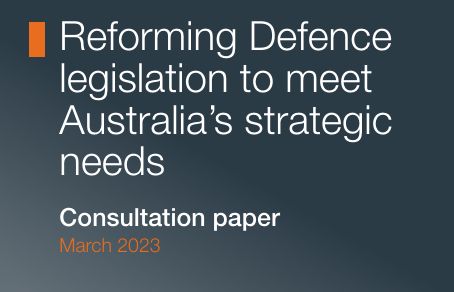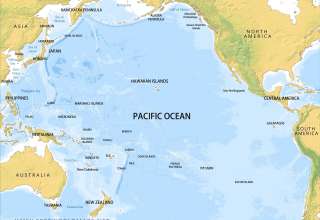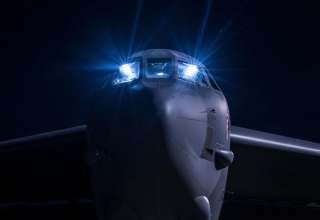by Bevan Ramsden *
War preparations began with the U.S. Force Posture Agreement providing a gateway for US military build- up in the Northern Territory and giving them unimpeded access to our seaports and air bases. War preparations have continued with huge expenditures on military acquisitions topped with $368 billion on nuclear -powered submarines. Now there are legislative amendments on the way to make it easier for the U.S. to support and launch hostile actions from Australian territory.
Preparations by the United States to involve and use Australia in a war against China commenced on 16th November, 2011 when President Obama announced that up to 2,500 U.S Marines would be stationed in Darwin annually for six months to train for war with our A.D.F., as part of his “Pivot to Asia” of U.S. military forces, a strategy designed to “contain” China and maintain U.S. hegemony in the Asia/Pacific area. In August 2014 the Abbott government signed the U.S.-Australia Force Posture Agreement (FPA) which provides the basis for the stationing of U.S. troops in Australia and, together with SOFA (Status of Forces Agreement), provides the legal framework for U.S. militarization of Australia, especially the Northern Territory, thus setting up Australia as a U.S. forward base from which to support or launch its next war. This accelerated militarisation includes the upgrading of RAAF Tindal to accommodate U.S. B52 nuclear-capable bombers and the building of huge fuel storage and aircraft maintenance facilities in the Northern Territory for the exclusive use of U.S. forces. It also includes the upgrading at Australian taxpayer’s expense of the port and maintenance facilities at Cockburn Sound in Western Australia for the berthing and servicing U.S. and U.K. nuclear submarines.
Preparation for war is also indicated by the breadth and depth of current and proposed Australia Government military purchases such as long-range strike and unmanned weapon platforms and an urgent acquisition of killer drones.[1]
Seventy two of the problem-plagued F-35A joint strike force fighters are being purchased at the cost of $16 billion with a further $14 billion required for their maintenance over the decades. $10 billion has been ear-marked for construction of a port on Australia’s east coast for berthing and servicing nuclear submarines and $8 billion to upgrade H.M.A.S. Stirling in WA for the same purpose.
On the 17th March, 2023 we heard the news[2] that Australia is to buy 220 Tomahawk cruise missiles from the USA at the cost of $1.3 billion. These are land attack missiles and will be fitted to Australia’s current Collins class submarines and Hobart class destroyers. SM-2 and SM-6 anti-aircraft and anti-missile missiles will be also acquired, off the shelf, initially.
On 5th January, 2023[3] the Albanese government finalised a deal to buy 20 of the truck-mounted rocket launchers by 2026, while signing another deal to acquire the Norwegian-made Naval Strike Missiles (NSM) for Australian warships next year.
Precise costs of the purchases are being kept secret for security reasons, but the government has confirmed to the ABC the overall figure is “between one and two billion dollars”.
In April 2023, Defence announced the awarding of a contract to Lockheed Martin for the development of a sovereign-controlled satellite communication system, at the cost of $3 to 4 billion. “As space becomes a future theatre of war and data super-highway, dozens of defence capabilities already depend on satellite communications “
Further to this, Prime Minister Albanese then announced in March, 2023 the Australian Government’s intention to acquire long range, hunter-killer nuclear powered submarines at the cost of $368 billion over 3 decades. Subsequent public discussion has suggested that, since three of these nuclear powered submarines are currently operational vessels to be purchased from the U.S. the US military would not have allowed their sale to Australia unless the Australian Government had given them iron-clad assurances that they will be used alongside U.S. submarines, for example, in a U.S. war against China over Taiwan
With this background of war preparation it should come as no surprise that one outcome of the recent inquiry into war powers reform (The Australian Parliament’s Joint Standing Committee on Foreign Affairs, Defence and Trade Inquiry into international armed conflict decision making), apart from recommending that the Prime Minister and his security cabinet retain the powers to send our troops to wars overseas without approval of parliament, was the amendment recommended for the Cabinet Handbook. This proposed amendment would state that the authority to deploy Australia military forces overseas be vested in the Governor General under Section 68 of the Constitution rather than the PM relying on the Defence Act for this authority. Section 68 designates the Governor- General as commander- in -chief of the defence forces. The Governor-General acts on the advice of the PM and his national security cabinet. The stated “justification” for this change was that in the case of illegal wars, meaning ones not authorised by the United Nations, having the Governor-General send the troops to war could get the Prime Minister, Defence Chiefs and troops off the hook if the International Criminal Court investigated allegations of “war crimes”. Dr Alison Broinowski, president of Australians for War Powers Reform, has commented that a war with China over Taiwan would be just such an illegal war.
Legislative changes to the Defence Act are also being flagged by a ‘Consultation on Reforming Defence legislation to meet Australia’s strategic needs’ which closes on 21st April, 2023.
Reading between the lines and with the help of advisors with military experience, the Independent and Peaceful Australia Network (IPAN) has fleshed out some alarming possibilities that might emerge from Defence Act amendments resulting from this consultation.
Under the heading ‘Full range of Military Activities’ the Consultation appears to be seeking amendments that will allow the A.D.F. to conduct operations against another state or no-state actor below the threshold of war, referred to by the military as ‘grey zone’ operations. Such legislation would allow the ADF to conduct lethal operation, say assassinations and sabotage, where war is not declared. Another part of the Consultation refers to allowing the ADF to “train as we fight”, which could mean giving the A.D.F. relief from various work health and safety requirements so it can train with a higher degree of realism. Over-riding state and territory heath and safety legislation might extend to other regulations such as indigenous people’s rights, environmental protection, safety regulations in regard to transport or storage of radio-active materials and gun laws including the banning of the carrying of arms in public.
IPAN has been advised that the Consultation heading ‘Seamless Interoperability with International Allies’ is intended to make the A.D.F. so closely integrated with U.S. forces that there will be hardly any difference between the ability of an Australian force element to act and the U.S. to commanding a U.S. force to act. The Consultation may also be seeking amendments that will enable the US to act out hostile military actions, such as carrying out bombing missions from Australian territory without seeking Australian Government approval.
Initiative 3 of the Consultation, headed ‘Security of Military Capabilities,’ seems to suggest that current laws preventing citizens entering bases could be extended to restrict lawful citizen’s protest actions. In its submission to the consultation IPAN said: “IPAN strongly opposes amendments to the Defence Act or other laws which would prevent, impede or make illegal, political protest against foreign or domestic military assets or military activities which support wars which are not in the interests of the Australian people; such political protests are guaranteed by the United Nations International Covenant on Civil and Political Rights which the Australian Government has signed and ratified.”
In its submission IPAN also called for the Defence Act to be amended to confine the A.D.F. to defence of Australian territory including its approach waters up to and including the 200 nautical mile exclusion zone around the continent with the only exception to this being military action initiated and sanctioned by the United Nations and with the approval of the Australian Parliament.
In addition, IPAN called for the Defence Act to be amended to ban the A.D.F. from using or storing nuclear weapons or supporting any foreign power using nuclear weapons. Contributors to the IPAN-led People’s Inquiry recommend a complete change of mindset for Australia, rather than the current channeling of public opinion towards war preparation. The final report from the inquiry, ’Charting our own course: Questioning Australia’s involvement in US-led Wars and the Australia-United States alliance’ recommended that “The Australian Government should shift its focus away from what it recognizes as national defence to more comprehensive diplomacy to better ensure Australia’s national security”.
There is an upsurge in public concern and anti-war activity in response to the Government’s war preparations, but this opposition must be multiplied many times to stop the Australian government spending heavily on the military and so diverting scarce public money away from addressing urgent social needs and from propelling us into a needless, illegal war, one which would have devastating consequences for the Australian people.
[1] As reported by Geelong Advertiser, 4th March,2023 [2] ABC News 17th March 2023 [3] ABC News, 5th January 2023* Bevan Ramsden is an ex-telecommunications engineer and TAFE teacher and a long-time peace activist. He advocates for Australia’s independence. He is a former member of the coordinating committee of the Independent and Peaceful Australia Network) IPAN) and current editor of its monthly e-publication, Voice. Bevan was also a member of the IPAN led People’s Inquiry Working Group, https://independentpeacefulaustralia.com.au/








